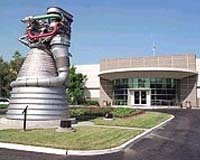 |
Arlington VA (SPX) Nov 22, 2010 Following an extensive six-month review, the independent Engineering Review Board (ERB) chartered to examine data collected during the Falcon Hypersonic Technology Vehicle's (HTV-2) first flight has completed its review. The ERB concluded that the anomaly resulted from flight control authority limitations to operate at the angle of attack the vehicle was programmed to fly for the speed and altitude of the flight. Detailed analysis conducted by the ERB revealed that the most probable cause of the HTV-2 flight anomaly was higher-than-predicted yaw, which coupled into roll thus exceeding the available control capability at the time of the anomaly. The analysis concluded that knowledge of several key aerodynamic parameters in this flight regime was limited. According to David Neyland, DARPA Tactical Technology Office director, "The conclusions of the ERB indicate that no major changes to the vehicle or software are required to mitigate the first flight anomaly. Engineers will adjust the vehicle's center of gravity, decrease the angle of attack flown and use the onboard reaction control system to augment the vehicle flaps when HTV-2 flies next summer." The first flight demonstrated significant accomplishments in the area of hypersonic flight. During the most challenging segment of flight, extensive data was captured for critical areas of interest to the program, (aerothermal, aerodynamic, thermal protection, navigation, guidance and control in the hypersonic flight regime). This knowledge enabled the ERB to confirm: "The HTV-2 flight anomaly is characterized as a slow divergence about the longitudinal axis (in roll) which continued until the roll rate reached a threshold where the autonomous flight system commanded flight termination." The flight also demonstrated successfully the first ever use of an autonomous flight termination system. Additionally, the flight represented the inaugural launch of the Minotaur IV booster. The booster demonstrated the ability to fly at extreme angles of attack up to 89 degrees to meet stringent release requirements for the HTV-2. The ERB reviewed and concurred with DARPA's corrective approach to support the launch of a second flight in late 2011.
Share This Article With Planet Earth
Related Links - Rocket Science News at Space-Travel.Com
 Rocketdyne To Perform Risk-Reduction Tests On 3GRB Engine
Rocketdyne To Perform Risk-Reduction Tests On 3GRB EngineCanoga Park, CA (SPX) Nov 12, 2010 The Air Force Research Laboratory (AFRL) has awarded Pratt and Whitney Rocketdyne a $2.35 million contract to perform risk-reduction tests on key components of the Third Generation Reusable Booster (3GRB) rocket engine design. The 3GRB is a technology demonstration program for future U.S. Air Force spaceflight missions. Pratt and Whitney Rocketdyne is a United Technologies Corp company. ... read more |
|
| The content herein, unless otherwise known to be public domain, are Copyright 1995-2010 - SpaceDaily. AFP and UPI Wire Stories are copyright Agence France-Presse and United Press International. ESA Portal Reports are copyright European Space Agency. All NASA sourced material is public domain. Additional copyrights may apply in whole or part to other bona fide parties. Advertising does not imply endorsement,agreement or approval of any opinions, statements or information provided by SpaceDaily on any Web page published or hosted by SpaceDaily. Privacy Statement |